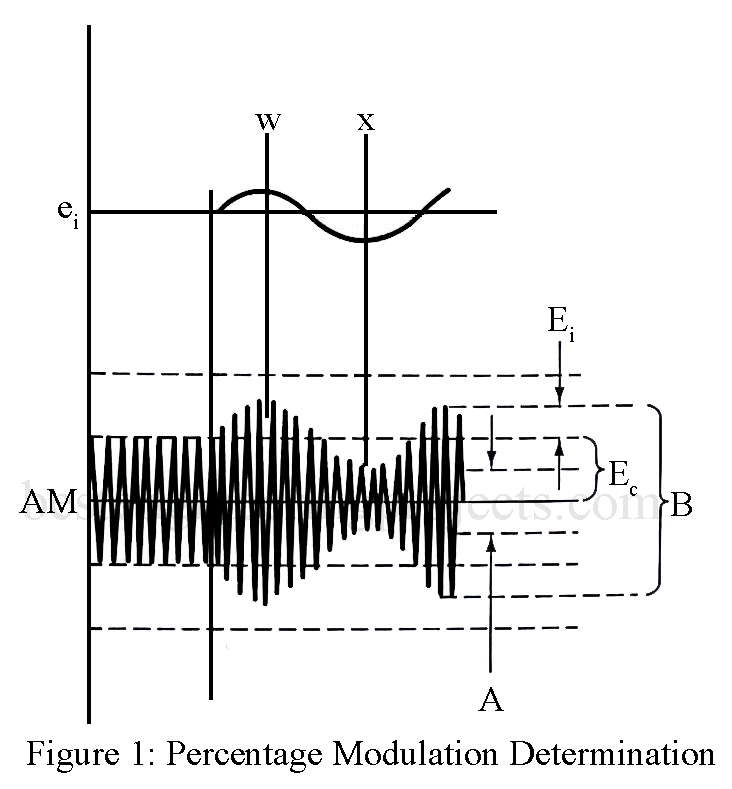Analysis of Amplitude Modulation
The equation for the amplitude of an AM waveform can be written as the carrier peak amplitude, EC, plus the intelligence signal, ei. Thus, the amplitude E is
E = EC + ei
but , so that
From the above Equation, Ei = mEC, so that
The instantaneous value of the AM wave is the amplitude term E just developed times . Thus,
Notice that the AM wave (e) is the result of the product of two sine waves. This can be expanded with the help of the trigonometric relation . Therefore,
The preceding equation proves that the AM wave contains the three terms previously listed: the carrier, the upper sideband at . It shows conclusively that the bandwidth required for AM transmission is twice the highest intelligence frequency.
In the case where a carrier is modulated by a pure sine wave, it can be shown that at 100% modulation, the upper and lower side frequencies are one-half the amplitude of the carrier. In general, as just developed,
where ESF = side-frequency amplitude
m = modulation index
EC = carrier amplitude
In an AM transmission, the carrier amplitude and frequency always remain constant while the sidebands are usually changing in amplitude and frequency. The carrier contains no information since it never changes. However, it does contain the most power since its amplitude is always at least double (when m = 100%) the sideband’s amplitude. It is the sidebands that contain the information.
Example: Determine the maximum sideband power if the carrier output is 1 kW and calculate the total maximum transmitted power.
Solution
Since
it is obvious that the maximum sideband power occurs when m = 1 or 100%. At that percentage modulation, each side frequency is ½ the carrier amplitude. Since power is proportional to the square of the voltage, each sideband has ¼ of the carrier power or ¼ x 1kW, or 250 W. Therefore, the total sideband power is 250 W x 2 = 500 W, and the total transmitted power is 1 kW +500 W or 1.5 kW.
